The air brake valves include cab control valves, relay valves, automatic control valves, and various safety valves. Air valves are pneumatic controls that route compressed air through hoses and lines to or from the air brake components. They control service brake chambers, spring brake chamber assemblies, trailer supply, and trailer service air lines.
All air valves have air passages and internal moving parts. As the internal parts move, they direct the compressed air to the desired location. Each valve has at least one supply port to allow air to enter the valve and one delivery port to allow air to exit the valve. Some valves have a control port that allows an air pressure source to control when air can flow through the valve. An exhaust port allows air to vent to the atmosphere. Some valves have special function control ports such as balance or reservoir ports.The use of these special ports will be discussed on the valves that have them.
Air brake valves operate either manually or automatically. Manual valves require the driver to move a knob, handle, or pedal to work the valve. Automatic valves use control ports or internal regulating parts to work.
Air Brake Valves Overhaul
For air brake valves overhaul call 1-800-AIR-BRAK (1-800-247-2725).
Park Control Valve, IP Mounted
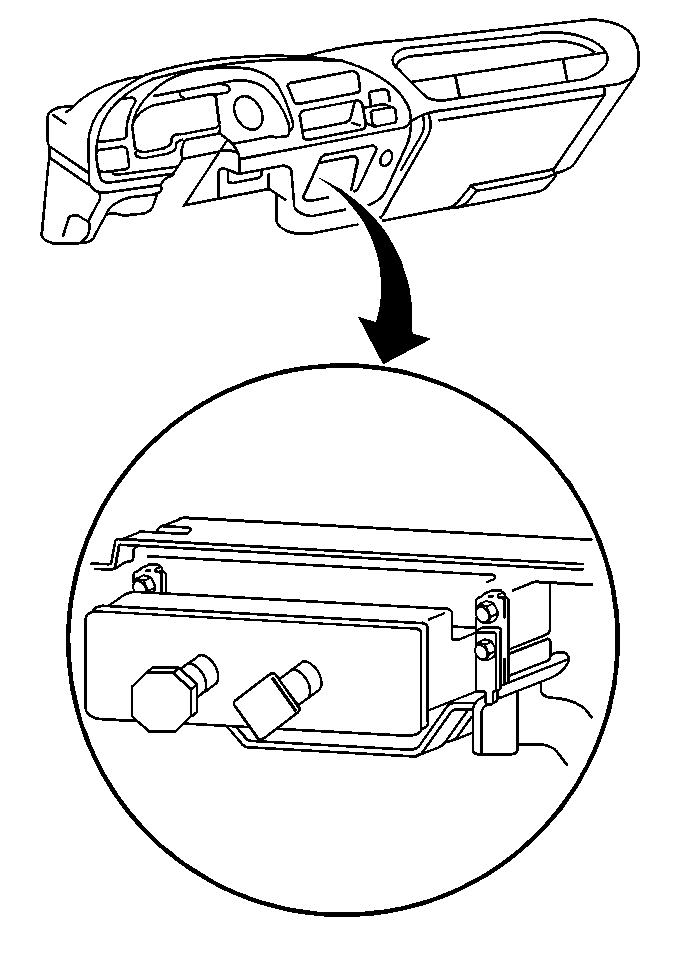
The Bendix® PP-1 park control valve (cab mounted) is used on air brakes models without trailer provisions. The park control valve (cab mounted) is mounted in the instrument panel and has a yellow diamond-shaped control knob. The vehicle spring brakes are applied when the knob is pulled out. Pulling the knob out (exhaust position) allows the spring brake chamber assemblies to be activated. This applies the parking brakes.
Pushing the knob releases the parking brakes as long as the supply pressure is above 276 kPa (40 psi). When the supply pressure drops to 276 kPa (40 psi) and below, the internal spring causes the knob to pop out. This then returns the valve to the exhaust position, applying the parking brakes.
The park control valve (cab mounted) has a supply port. a delivery port, and an exhaust port. When the knob is pulled out, the supply port is blocked and the delivery port vents to the exhaust port. When the knob is pushed in, the exhaust port is blocked and supply air flows out of the delivery port.
Single Check Valve

A Bendix® SC-1 single check valve is installed at the inlet of each service air reservoir that is fed by the supply air reservoir. This valve prevents the loss of service brake air pressure if a leak occurs in the supply portion of the system. The single check valve has a supply port and a delivery port. Air flow in the normal direction moves the check valve disc from its seat and the air flow is unobstructed. Air flow in the reverse direction is prevented by the seating of the single check disc, which is caused by a drop in up-streamair pressure and is assisted by the spring.
Double Check Valve

The Bendix® DC-4 double check valve directs air from two supply lines into a common delivery line. The supply line with the highest air pressure will feed air to the delivery port while the lower pressure supply line is blocked. The valve isolates the supply ports.
The double check valve uses the front and rear service reservoirs to supply air to the spring brake chamber assemblies and the trailer air supply line. The trailer air brake control valve ties into the double check valve on models with trailer provisions.
Dual Application Valve
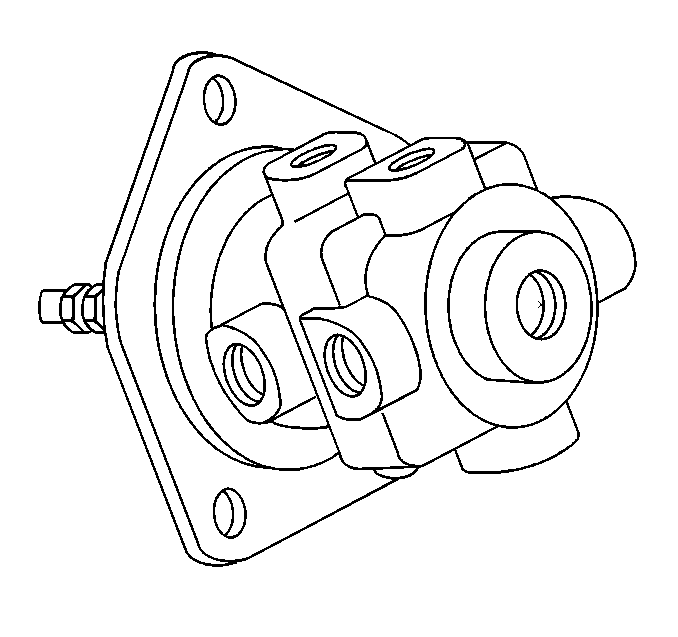
The Bendix® E-6 dual application valve is a manual valve activated by the brake pedal. The dual application valve has two separate supply and delivery circuits for the front and the rear service brakes. Separating the circuits allows the driver to gradually apply and release the brakes.
The supply, the delivery, and the exhaust ports are identified by letters cast into the dual application valve body next to the ports. The primary supply and delivery ports are located in the dual application valve upper body portion and the secondary supply and the delivery ports are located in the lower body portion of the dual application valve. Both of the circuits serve as flow control valves. The flow of air directly relates to the travel of the brake pedal. The primary and secondary circuits use a common exhaust port protected by an exhaust diaphragm.
Inflation Valve

The inflation valve is located on the air compressor governor. The inflation valve is used to fill the air system from an external source.
The inflation valve is a check valve and fitting for an external air hose connection. A cap is located on the valve stem to keep out dirt and other contaminants.
Reservoir Drain Valve, Automatic Type
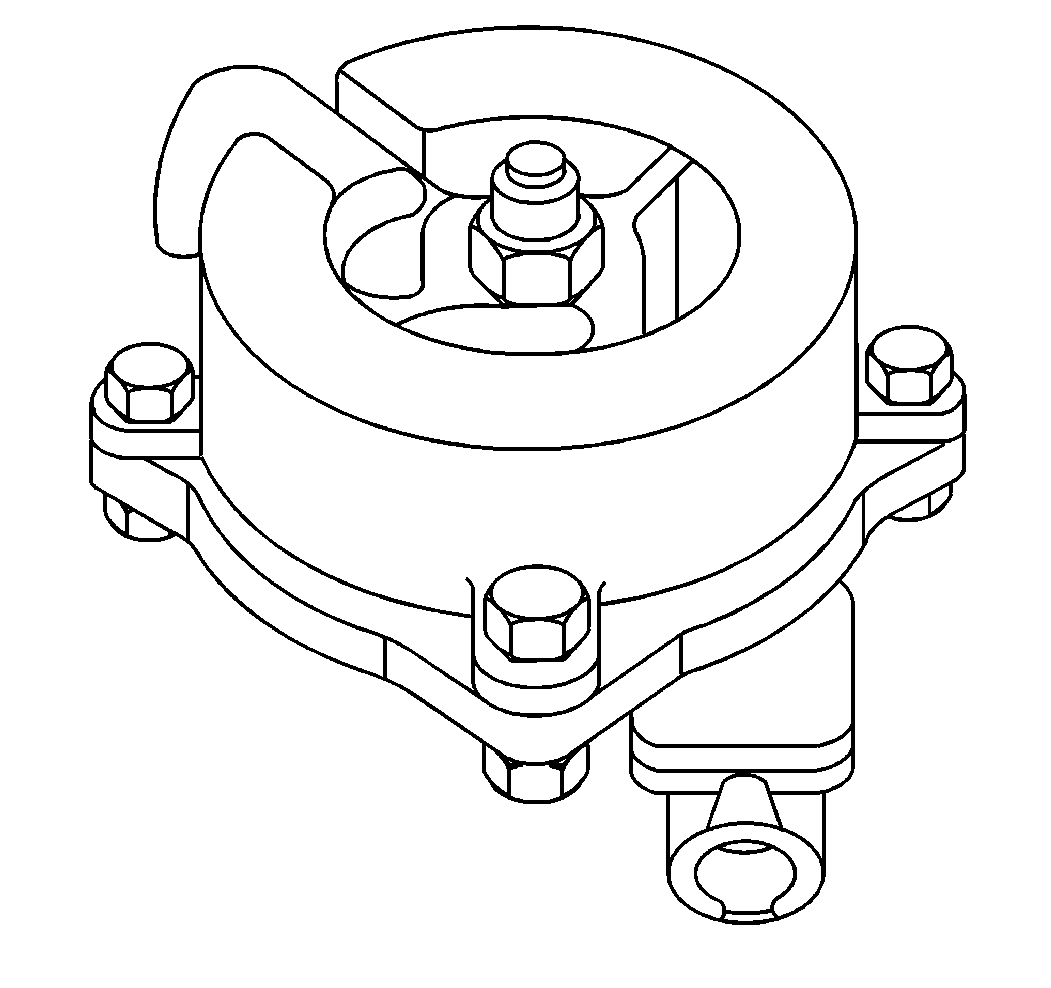
The Bendix® DV-2 reservoir drain valve (automatic type) is available as an option. It is also available with an optional heater and a thermostat cast into the cover.
The reservoir drain valve (automatic type) automatically drains moisture and contaminants from the supply reservoir. It mounts to the supply air reservoir at the valve supply port with the reservoir drain valve (automatic type) exhaust port pointing down.
The supply and exhaust ports are normally closed. When the air compressor turns on to increase reservoir pressure, the supply port opens. This allows air and contaminants to collect in the sump of the reservoir drain valve (automatic type). The supply port remains open until the supply air reservoir pressure reaches the governor cut-out pressure. The valve spring then closes the supply port.
When the supply reservoir pressure drops about 14 kPa (2 psi), the sump cavity pressure opens the exhaust valve and allows the moisture and contaminants to be ejected from the sump cavity until the pressure in the sump cavity drops enough to close the exhaust valve. The length of time the exhaust valve remains open and the amount of moisture and contaminants ejected depends upon the sump pressure and the reservoir pressure drop that occurs each time air is used for the system.
The reservoir drain valve (automatic type) can be drained manually by moving the wire in the exhaust port upward, holding it in until the draining is complete.
The thermostat on the heated model will activate the heating element when the valve body reaches a temperature of approximately 7°C (45°F) and deactivates the heating element when the valve body is heated to approximately 29°C (85°F).
Pressure Protection Valve
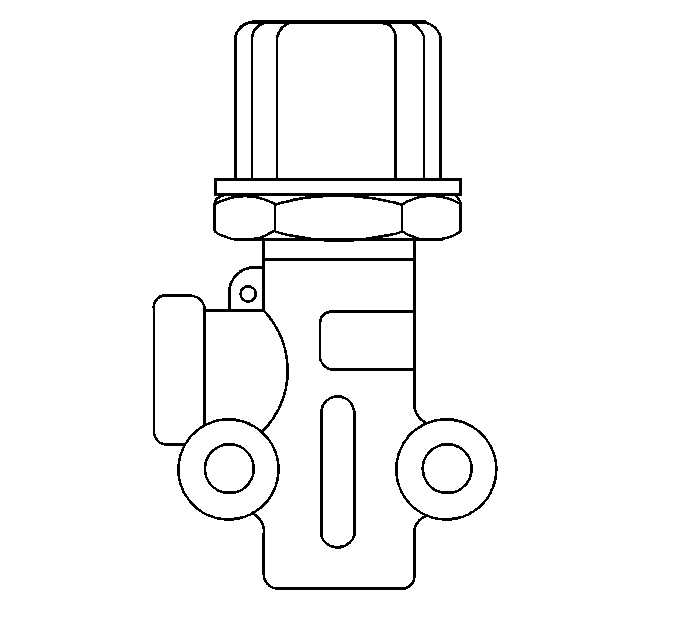
The Bendix ® PR-2 pressure protection valve is used on vehicles with air accessories or provisions for air accessories. The pressure protection valve is located on the front service air reservoir and the rear service air reservoir.
The pressure protection valve protects the air supply to the brakes if a failure occurs in the accessory equipment. The pressure protection valve has a supply port and a delivery port.
The pressure protection valve allows air to flow from the supply port to the delivery port as long as sufficient air pressure is available. If air pressure decreases below the specified closing pressure, the internal regulating spring moves the piston, closing the inlet valve. The remaining air pressure at the supply side is retained. The closing pressure is noted on the label attached to the pressure protection valve. The opening pressure is 103-238 kPa (15-20 psi) higher than the closing pressure.
Quick Release Valve
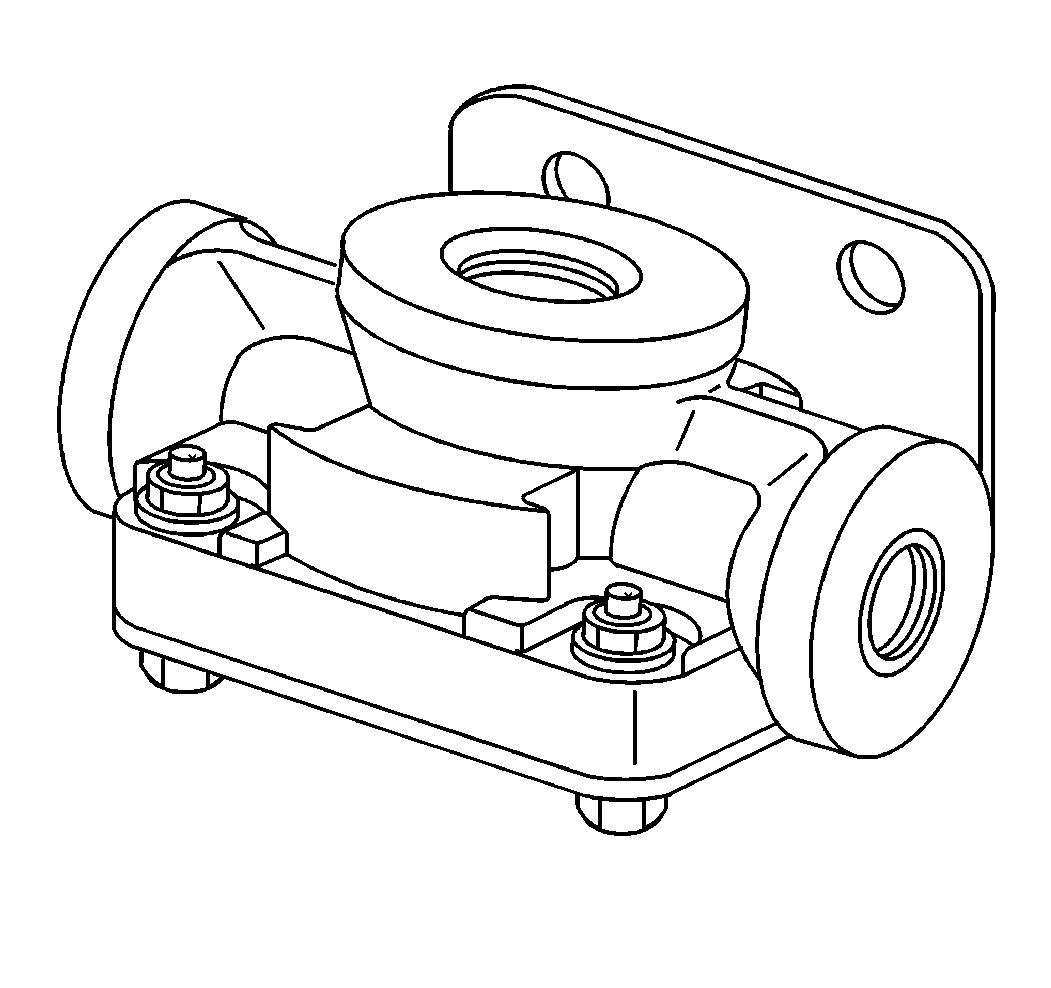
The Bendix® QR-N quick release valve is mounted between antilock modulators.
When the brakes are applied, supply air flows through the quick release valve and out two delivery ports connected to the service brake chamber assemblies at the front wheels. When the foot brake is released, service brake chamber assembly air at the delivery ports is immediately vented through the exhaust port rather than the dual application valve. The quick release valve reduces the time required to exhaust service brake chamber assembly air, as compared to the time required to exhaust air through the dual application valve.
The quick release valve has an internal diaphragm. Air entering the supply port of the quick release valve causes the center portion of the diaphragm to seal the exhaust ports. Simultaneously, the outer edge of the diaphragm moves away from the sealing lip of the upper valve body, allowing air to flow from the supply port out the two delivery ports. Air then flows through the quick release valve to the service brake chamber assemblies until they are full. When air flow stops, the lip of the diaphragm seals the supply port. This sealing action causes the delivered air pressure to be slightly less than the supply pressure. The maximum differential air pressure is typically (1 psi). Releasing the brake pedal causes air from the service brake chamber assemblies to raise the diaphragm. This seals the supply port and opens the exhaust port, venting the service brake chamber air pressure.
Quick Release Valve, Double Check Type
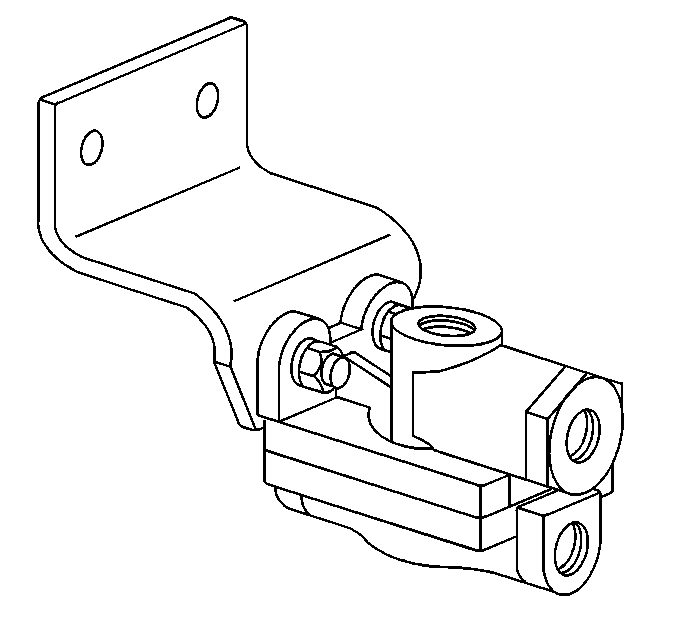
The Bendix® QR-1C quick release valve (double check type) mounts to the right side frame rail near the rear axle assembly.
The quick release valve (double check type) is a dual function valve. The quick release valve's (double check type) primary function is to serve the emergency side of the spring brake chamber assemblies as a quick release valve. In addition, it functions as an anti-compound device. The quick release valve (double check type) prevents a service and emergency brake application from the occurring at the same time.
The quick release valve (double check type) has a supply port, a balance port, an exhaust port, and two delivery ports. Applying the park control valve(cab mounted) sends air into the supply port, out both delivery ports, and to the spring brake chamber assemblies. When the park control valve (cab mounted) pops out to apply the spring brake chamber assemblies, the supply and balance ports are sealed and the exhaust port opens. This vents the spring brake chamber assembly's air. Applying the brake pedal while the vehicle is parked causes service air to flow into the balance port, though the double check diaphragm, and out the delivery ports to the spring brake chamber assemblies.
Relay Valve
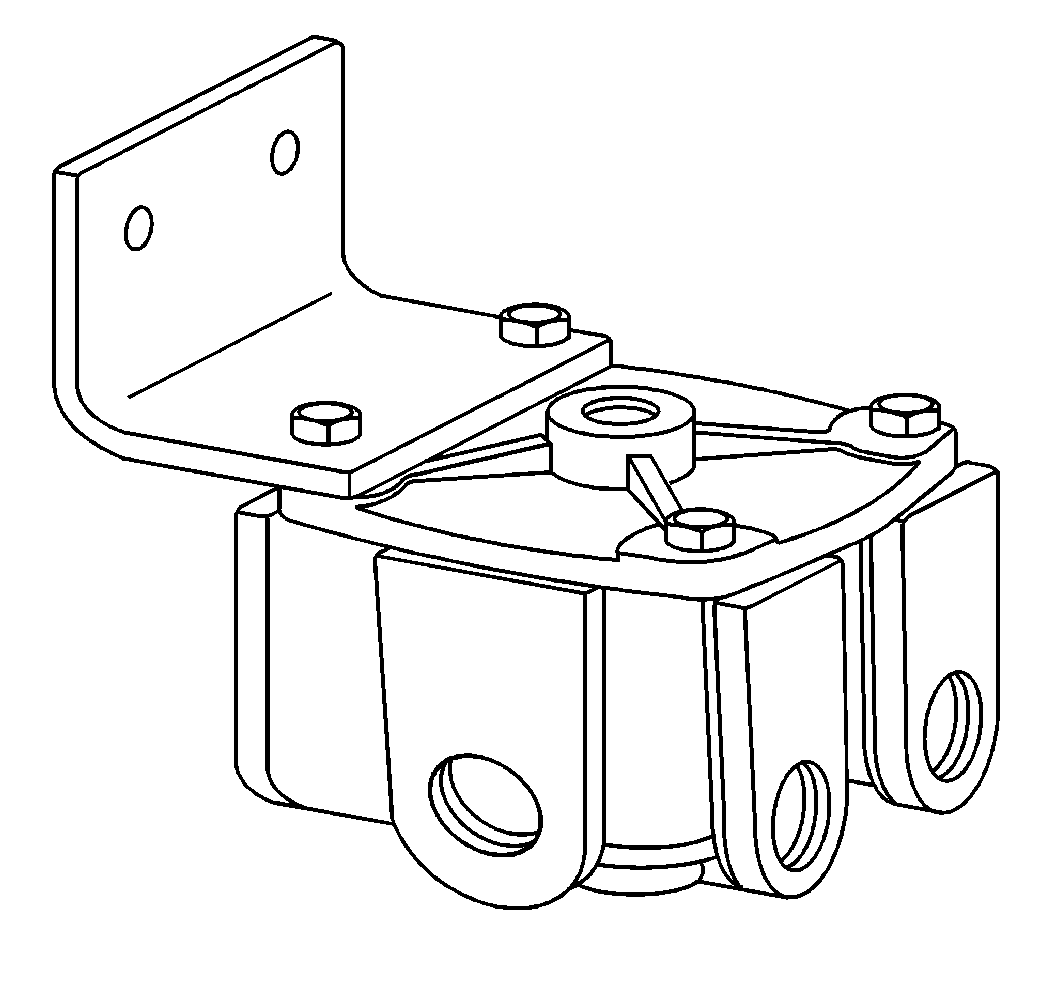
The Bendix® R-12 relay valve is mounted on a bracket to the frame side rail near the rear axle(s) to allow the shortest possible delivery lines to the rear service brake chamber assemblies.
The relay valve functions as a remote brake valve that delivers or releases air to the rear service brake chamber assemblies in response to control air from the dual application valve.
The relay valve has one control port, one supply port, two delivery ports, and one exhaust port. The control port connects to the rear service brake line from the dual application valve. The supply port connects to the rear axle service reservoir. The delivery ports connect to the rear service brake chamber assemblies.
As air pressure increases at the control port, an internal piston lowers to block the exhaust port and to gradually open the supply port in relation to piston travel. Supply air enters the cavity on the opposing face of the piston and flows out the delivery ports. With control and supply air on opposing faces, the piston balances to a position where the two pressures are equalized. Any change in control pressure then causes an equal change in delivery pressure. Releasing the brakes removes the control air. This causes the piston to rise, close the supply port, and open the exhaust port in the bottom of the relay valve. Service brake chamber assemblies air at the delivery ports then vent through the exhaust port.
Relay Valve, Double Check Type

The Bendix® R-14 relay valve (double check type) is used on vehicles not built as tractors. It works with the parking brake control valve.
The relay vale (double check type) is mounted to the frame side rail near the rear axle(s) to allow the shortest possible delivery lines to the spring brake chamber assemblies.
The valve functions as a quick release valve that delivers or releases air to the spring brake chambers in response to the air pressure from the system park control valve (chassis mounted).
An internal double check diaphragm balances service brake line pressure and spring brake line pressure. This prevents the service brake chamber and the spring brake chamber from compounding their braking forces on the slack adjusters. When the service brake chambers and the spring brake chambers are applied at the same time, the double check diaphragm uses some air from the service brakes to partially release spring brake pressure from the slack adjuster. This balances the mechanical spring pressure with the service brake line pressure and keeps the slack adjusters from overloading.
The relay valve (double check type) has a control port, balance port, two supply ports, two delivery ports, and an exhaust port. The control port connects to the system park control valve (chassis mounted). The balance port connects to a relay valve delivery line. The control and balance lines are combined through an internal double check diaphragm to prevent brake compounding. One of the supply ports connects to the dual application valve, and the other is usually plugged. The delivery ports connect to the spring brake chamber assemblies.
When the dual application valve increases air pressure at the control port, an internal piston lowers to block the exhaust port and gradually open the supply port in relation to piston travel. Supply air enters the chamber on the opposing face of the piston and flows out the delivery ports. With control and supply air on the opposing faces, the piston balances to a position where the two pressures are equalized. Any change in control pressure then causes an equal change in delivery pressure.
When air pressure is released from the supply port and air pressure in the cavity above the relay piston is exhausted, air pressure under the piston lifts the relay piston and the exhaust seat moves away from the exhaust valve, opening the exhaust passage. With the exhaust passage open, the air pressure in the brake chamber assemblies is then permitted to exhaust through the exhaust port, releasing the brakes.
Relay Valve, Proportioning Type
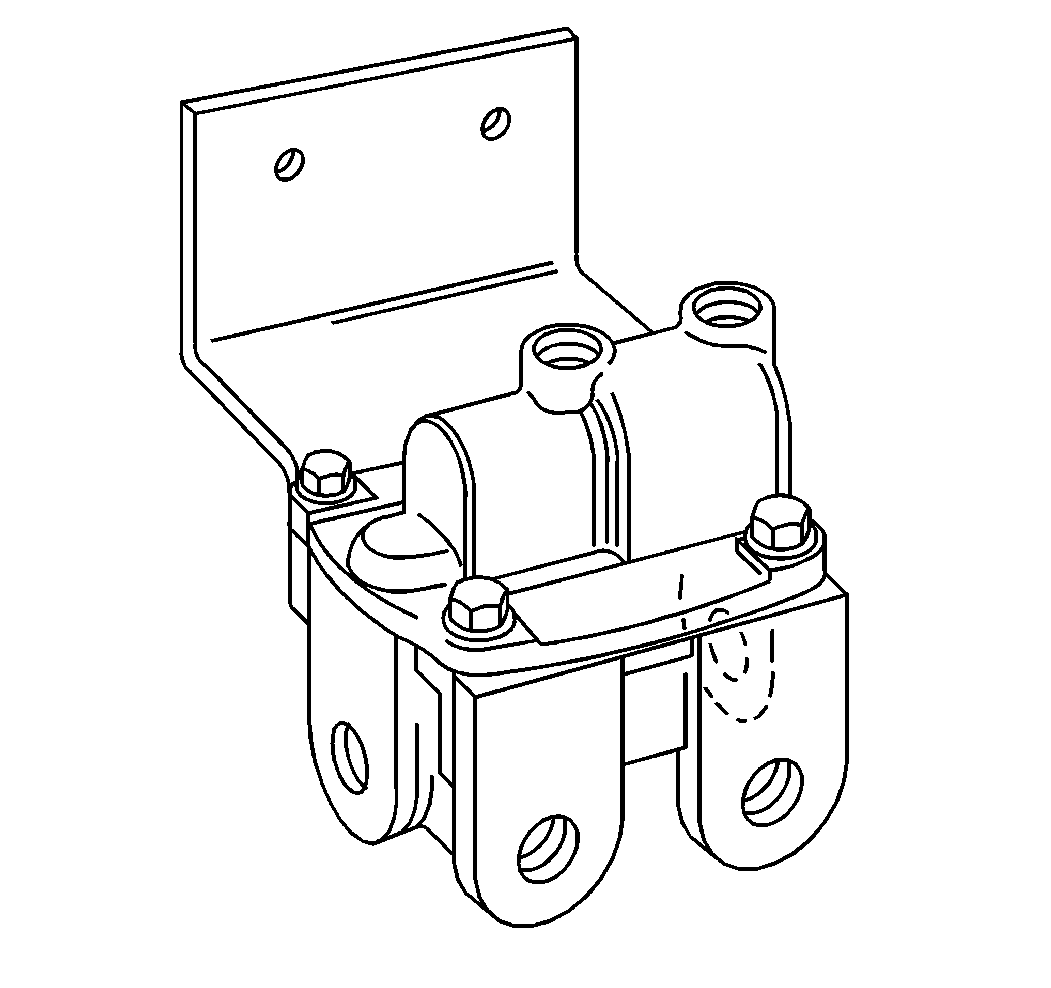
The Bendix® BP-R1 relay valve (proportioning type) is only used on tractor applications. It is a combination of two individual valves in a single housing. The lower portion, or body, of the relay valve (proportioning type) contains a standard service brake relay valve. The upper portion, or cover, houses a brake proportioning valve to reduce normal service brake application pressure when the tractor is not towing a trailer.
The relay valve (proportional type) mounts to the right side frame rail. Air connections are identified by embossed letters. The relay valve (proportioning type) has a supply port connected to the rear service air reservoir, service port connected to the dual application valve, control port, and two delivery ports to allow air to flow to the service brake chamber assemblies.
When the tractor is pulling a trailer, it serves as a service brake relay valve to speed up apply and release time. When the tractor operates without a trailer, the relay valve (proportioning type) serves as service brake relay valve to speed up apply and release time. When the tractor operates without a trailer, the relay valve (proportioning type) reduces air pressure to the rear service brake chambers for improved control and reduced stopping distances.
Safety Valve
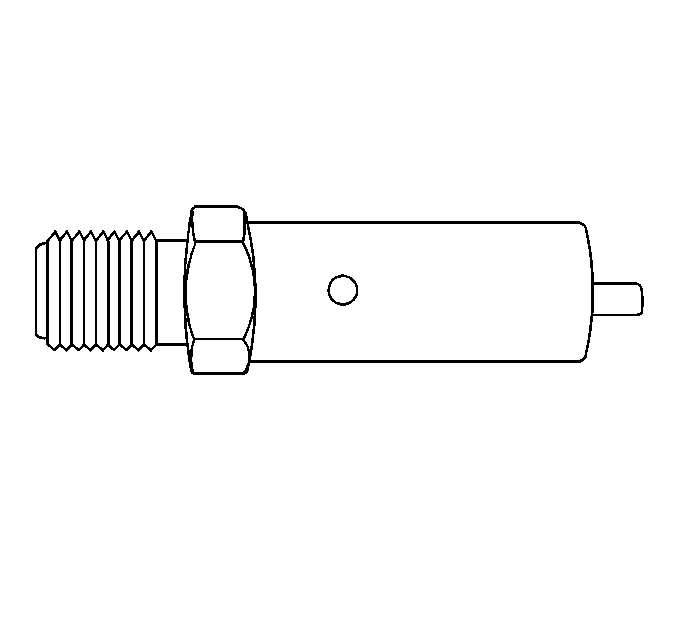
A Bendix® ST-3 safety valve is installed in the air supply reservoir to stop air pressure buildup beyond a safe limit. The safety valve protects the reservoirs and lines in case of a governor malfunction. The safety valve is a spring-loaded type with a ball check valve and seat.
If the air pressure rises to approximately 1034 kPa (150 psi) it forces the ball check valve to unseat. This relieves air pressure through the exhaust vent in the spring cage. When the air pressure decreases sufficiently, the spring force seats the ball check valve, sealing off the supply air reservoir. This occurs at approximately 931 kPa (135 psi). The rated air pressure is attached to outside of the safety valve spring cage. The pressure setting on the safety valve is not adjustable.
Park Control Valve, Chassis Mounted
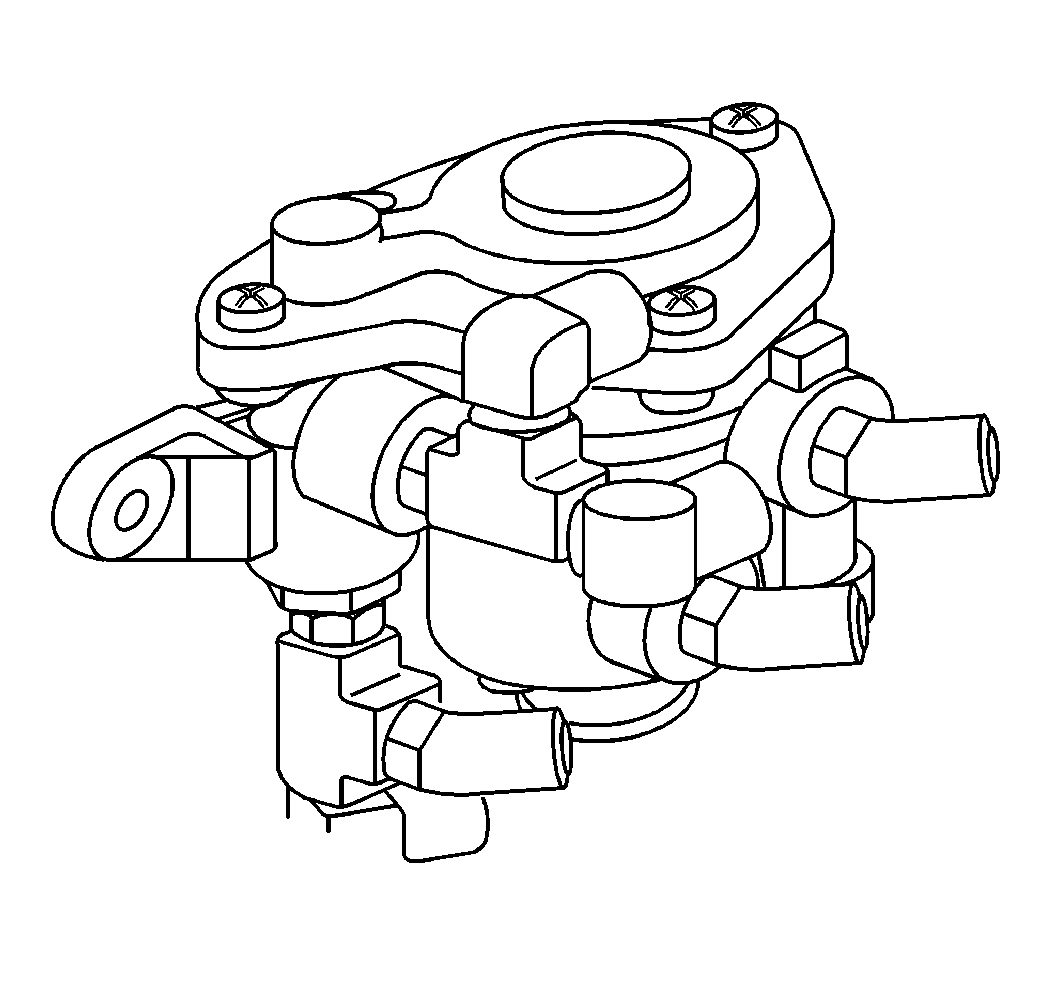
The Bendix® SR-1 park control valve (chassis mounted) is used on all models that have spring brake chamber assemblies. The park control valve (chassis mounted) works with the relay valve. The park control valve (chassis mounted) allows the front brake service lines to modulate the spring brake chamber assemblies when the rear service air pressure fails.
The park control valve (chassis mounted) is mounted directly to the crossmember. The exhaust port always points down. The park control valve (chassis mounted) has a supply port connected to the park control valve (cab mounted), a delivery port connected to the front brake circuit on the dual application valve, a rear air reservoir port that senses rear service air reservoir pressure, and an exhaust port covered by a diaphragm. All of the ports are labeled with embossed letters.
The park control valve (chassis mounted) delivers a set air pressure to the delivery line as long as the supply and reservoir port pressures are 380 kPa (55 psi) or more. The air pressure is called the rated spring hold off pressure. The park control valve (chassis mounted) detects an air pressure loss in the rear service reservoir, through the reservoir port. When that happens, front brake service air at the control port of the park control valve modulates the spring brake chamber assemblies with the brake pedal as if they were service brakes. This allows the spring brake chamber assemblies to work in place of the service brakes during emergency situations.
When the park control valve (cab mounted) pulls out to the park position, supply port air is exhausted. This causes delivery port air to vent through the exhaust port.
